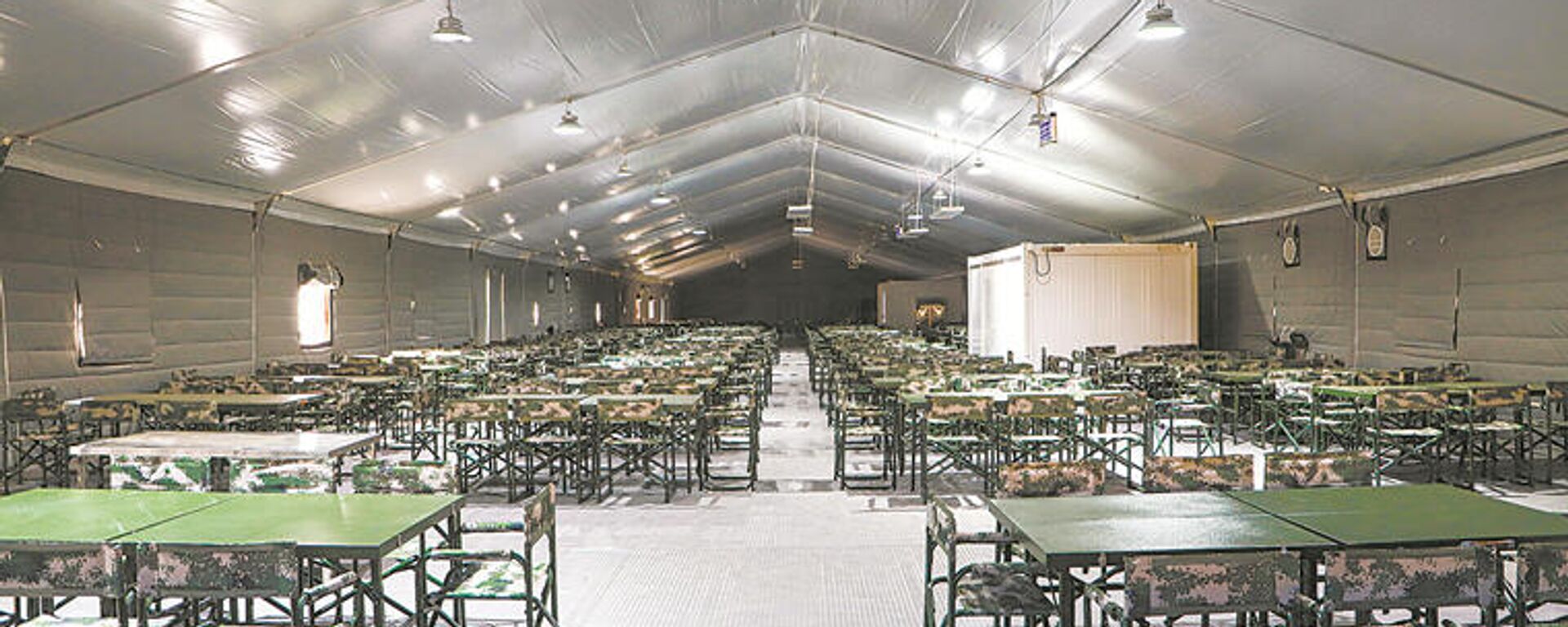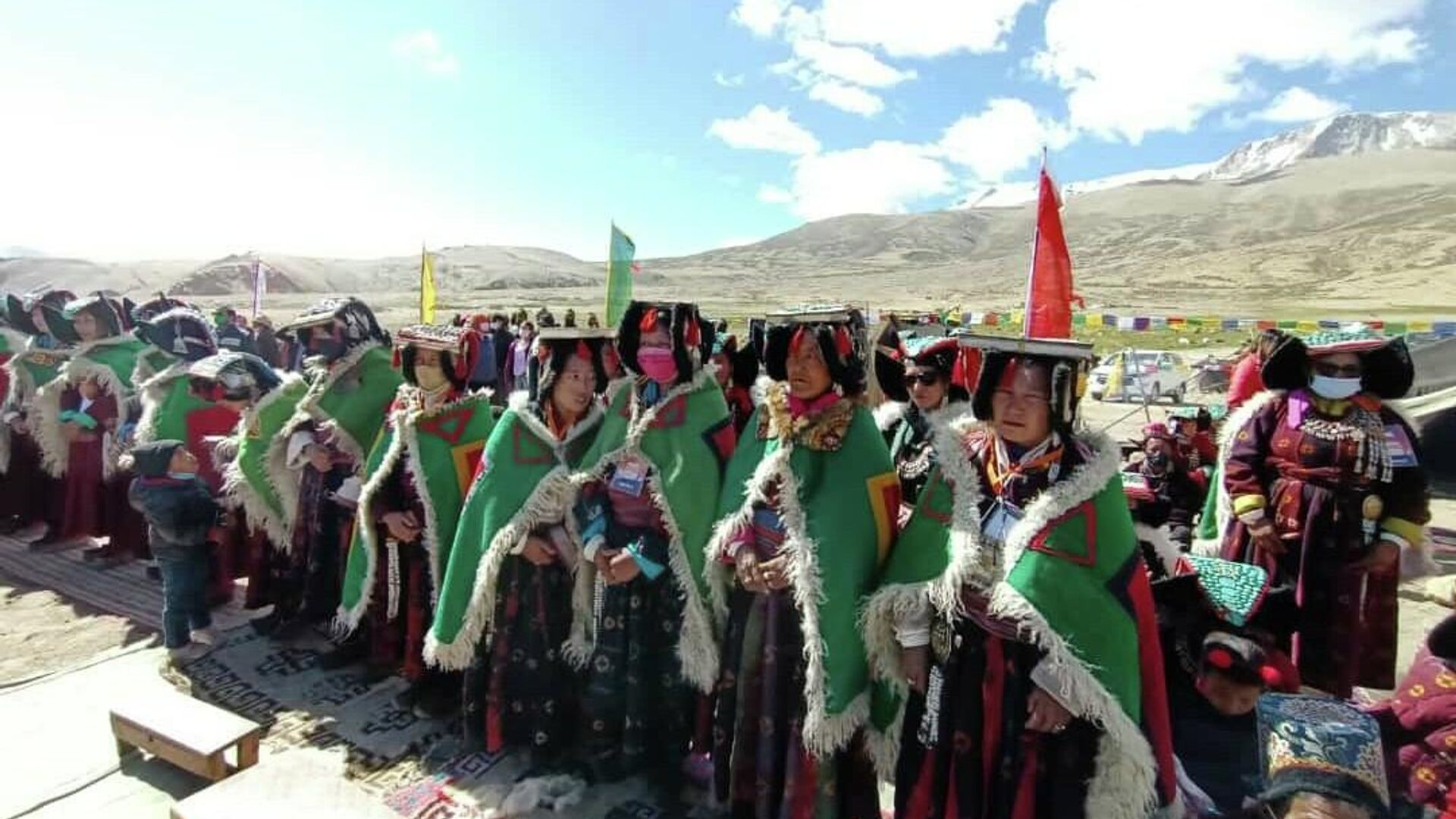https://sputnikglobe.com/20220202/india-to-invest-big-in-construction-of-villages-near-chinese-border-amid-territorial-disputes-1092681303.html
India to Invest Big in Construction of Villages Near Chinese Border Amid Territorial Disputes
India to Invest Big in Construction of Villages Near Chinese Border Amid Territorial Disputes
Sputnik International
People have vacated hundreds of villages along the Line of Actual Control that divides India from China due to a lack of road connectivity, health facilities... 02.02.2022, Sputnik International
2022-02-02T13:54+0000
2022-02-02T13:54+0000
2022-07-19T10:41+0000
tibet
pla
uttarakhand
chinese people's liberation army (pla)
narendra modi
ladakh standoff
china
infrastructure
village
indian army
https://cdn1.img.sputnikglobe.com/img/07e5/09/1e/1089548642_0:99:1080:707_1920x0_80_0_0_3ab3dbc442b4972b631d4d2124dfb466.jpg
In a push to assert India's presence along its 3,488-km disputed border with China, Prime Minister Narendra Modi has announced a "Vibrant Village Programme" to attract more settlers to the rough Himalayan landscape.The government would provide the country's northern border villages with electricity, water, housing, tourist centres, etc."These border villages act as fortresses for the armed forces. This new project will smoothen access to hills-both for tourists, pilgrims and, most importantly, for our defence forces," Modi added.The government has also planned to impart National Cadet Corps (NCC) training for the youngsters in border villages; the NCC are the youth wing of the Indian armed forces.Presenting the annual budget on Tuesday, Indian Finance Minister Nirmala Sitharaman said that existing schemes related to border areas would be converged with the "Vibrant Village Programme".The minister underlined that additional funding would be provided for infrastructure development and employment generation activities in border villages. "We will define their outcomes and monitor them on a constant basis," she said.For years, the Indian government carried out development activities in border villages under the Border Area Development Programme (BADP); still, it did not produce the desired result to populate the areas. Local representatives in the western sector of the Line of Actual Control complained about an absolute halt of construction activities since 2020 due to the non-availability of funds.The budget document shows the federal government had cut the BADP allocation by more than half to $29.5 million last year from a budget allocation of $75 million.In contrast to poor infrastructure on the Indian side, Stanzin says people of China's Tibet region enjoy every modern amenity, including a 5G network.China has developed 680 'Xiaokang' (prosperous or thriving villages) along its border with India ranging from Arunachal Pradesh to Ladakh. China's 14th Five Year Plan aimed to "speed up the construction of border villages" and build border airports and "about 200 new villages" along the frontiers.Last September, Global Times published a range of images of these villages, which feature utilities such as tap water, electricity, roads, and internet access. These Xiaokang also have a square for activities such as a gym, a police station, kindergartens, a supermarket, and plastic runways.The Chinese government has disbursed 30.1 billion yuan or nearly $4.6 billion in 2017 alone to set up modern border villages. China's President Xi Jinping has asked the Chinese Communist Party members to expedite the undergoing projects in the region to achieve double-digit annual growth there and increase tourism. Last July, Xi had spent a day at the Galai village of Nyingchi, 17 km away from India's Arunachal border. China connected Nyingchi with high-speed trains and airport last year.Celebrating 70 years of "peaceful liberation," Wu Yingjie, the Communist Party secretary for Tibet, said last August that the population of the border regions in Tibet has increased by 10.5 percent under the border reinforcement programme.In contrast, over 700 villages were completely depopulated over the last decade in Uttarakhand, a state where more than 100 troops of the People's Liberation Army and 55 horses crossed into Indian Territory last August.States like Himachal Pradesh and Sikkim have also reported a decline in population of as much as 5 percent in the last 10 years.The Indian armed forces consider nomadic tribes in the Himalayan belt as an influential force to curb the transgression or land capturing by PLA across the LAC.New Delhi considers the Line of Actual Control 3,488km long, whereas Beijing believes it is only 2,000km long. The entire range of the LAC is loosely demarcated, and the two armies often cross perceived lines or clash over civilian works.
https://sputnikglobe.com/20211214/china-rolls-out-portable-shelters-for-troops-in-himalayas-amid-border-row-with-india-1091518536.html
tibet
uttarakhand
ladakh standoff
china
arunachal pradesh
Sputnik International
feedback@sputniknews.com
+74956456601
MIA „Rossiya Segodnya“
2022
Rishikesh Kumar
https://cdn1.img.sputnikglobe.com/img/07e4/08/04/1080055820_0:0:388:389_100x100_80_0_0_40018ee210946d65d49ffba4f4c008e1.jpg
Rishikesh Kumar
https://cdn1.img.sputnikglobe.com/img/07e4/08/04/1080055820_0:0:388:389_100x100_80_0_0_40018ee210946d65d49ffba4f4c008e1.jpg
News
en_EN
Sputnik International
feedback@sputniknews.com
+74956456601
MIA „Rossiya Segodnya“
Sputnik International
feedback@sputniknews.com
+74956456601
MIA „Rossiya Segodnya“
Rishikesh Kumar
https://cdn1.img.sputnikglobe.com/img/07e4/08/04/1080055820_0:0:388:389_100x100_80_0_0_40018ee210946d65d49ffba4f4c008e1.jpg
tibet, pla, uttarakhand, chinese people's liberation army (pla), narendra modi, ladakh standoff, china, infrastructure, village, indian army, arunachal pradesh, president xijinping
tibet, pla, uttarakhand, chinese people's liberation army (pla), narendra modi, ladakh standoff, china, infrastructure, village, indian army, arunachal pradesh, president xijinping
India to Invest Big in Construction of Villages Near Chinese Border Amid Territorial Disputes
13:54 GMT 02.02.2022 (Updated: 10:41 GMT 19.07.2022) People have vacated hundreds of villages along the Line of Actual Control that divides India from China due to a lack of road connectivity, health facilities and employment opportunities. People from these strategically critical villages are the first informers of any transgression or ingression by the China's People Liberation Army.
In a push to assert India's presence along its 3,488-km disputed border with China, Prime Minister Narendra Modi has announced a "Vibrant Village Programme" to attract more settlers to the rough Himalayan landscape.
"Migration from border villages is not good for national security. The budget has provisions for developing 'vibrant villages' along the border," Modi stated on Wednesday.
The government would provide the country's northern border villages with electricity, water, housing, tourist centres, etc.
"These border villages act as
fortresses for the armed forces. This new project will smoothen access to hills-both for tourists, pilgrims and, most importantly, for our defence forces," Modi added.
The government has also planned to impart National Cadet Corps (NCC) training for the youngsters in border villages; the NCC are the youth wing of the Indian armed forces.
Presenting the annual budget on Tuesday, Indian Finance Minister Nirmala Sitharaman said that existing schemes related to border areas would be converged with the "Vibrant Village Programme".
The minister underlined that additional funding would be provided for infrastructure development and employment generation activities in border villages. "We will define their outcomes and monitor them on a constant basis," she said.

14 December 2021, 16:35 GMT
For years, the Indian government carried out development activities in border villages under the
Border Area Development Programme (BADP); still, it did not produce the desired result to populate the areas.
Local representatives in the western sector of the Line of Actual Control complained about an absolute halt of construction activities since 2020 due to the non-availability of funds.
"We did not receive funds under BADP from the federal government, thus leading to complete halt of development works in border villages," Konchok Stanzin, area councillor of Chushul Village of Ladakh, told Sputnik.
The budget document shows the federal government had cut the BADP allocation by more than half to $29.5 million last year from a budget allocation of $75 million.
In contrast to poor infrastructure on the Indian side, Stanzin says people of China's Tibet region enjoy every modern amenity, including a 5G network.
"Just opposite to Chusul, the Chinese government has set up nine towers to facilitate a 5G network for their people while we have only one 4G tower. China builds 30-35 km road in a month, but we take years to complete a road of such length. The Vibrant Village Programme infuses hope, but the government must ensure a timely and one-time fund release to develop modern villages at zero border," Stanzin said.
China has developed 680 'Xiaokang' (prosperous or thriving villages) along its border with India ranging from Arunachal Pradesh to Ladakh.
China's 14th Five Year Plan aimed to "speed up the construction of border villages" and build border airports and "about 200 new villages" along the frontiers.
Last September, Global Times published a range of
images of these villages, which feature utilities such as tap water, electricity, roads, and internet access. These Xiaokang also have a square for activities such as a gym, a police station, kindergartens, a supermarket, and plastic runways.
The Chinese government has disbursed 30.1 billion yuan or nearly $4.6 billion in 2017 alone to set up modern border villages.
China's President Xi Jinping has asked the Chinese Communist Party members to expedite the
undergoing projects in the region to achieve double-digit annual growth there and increase tourism.
Last July, Xi had spent a day at the Galai village of Nyingchi, 17 km away from India's Arunachal border. China connected Nyingchi with high-speed trains and airport last year.
Celebrating 70 years of "peaceful liberation," Wu Yingjie, the Communist Party secretary for Tibet, said last August that the
population of the border regions in Tibet has increased by 10.5 percent under the border reinforcement programme.
In contrast, over 700 villages were completely depopulated over the last decade in Uttarakhand, a state where more than 100 troops of the People's Liberation Army and 55 horses
crossed into Indian Territory last August.
States like Himachal Pradesh and Sikkim have also reported a decline in population of as much as 5 percent in the last 10 years.
"Government will have to work hard to relocate people in the border area. Most of our bridges are decades-old; several were built during the 1962 war," Karma Lepcha, a resident of north Sikkim, told Sputnik.
The Indian armed forces consider nomadic tribes in the Himalayan belt as an influential force to curb the transgression or land capturing by PLA across the LAC.
New Delhi considers the Line of Actual Control 3,488km long, whereas Beijing believes it is only 2,000km long. The entire range of the LAC is loosely demarcated, and the two armies often cross perceived lines or clash over civilian works.



